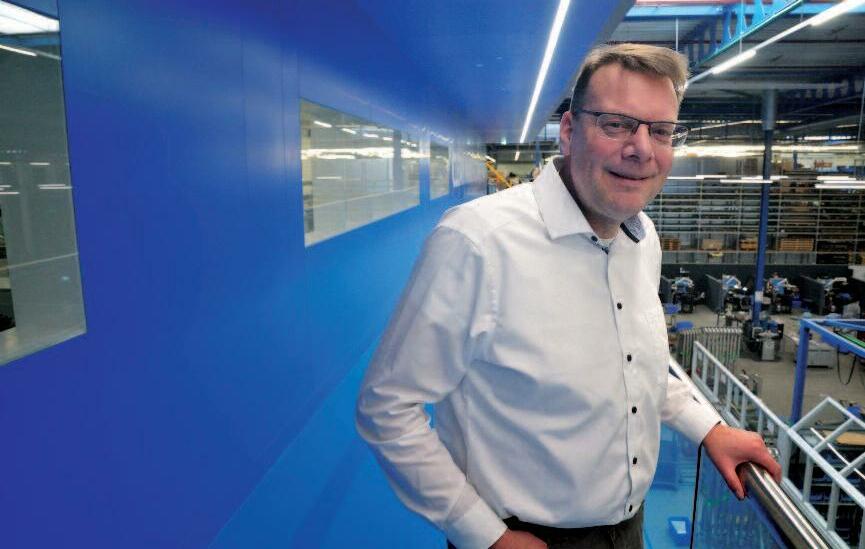CO-ENGINEERING
SETTELS DIFFERENTIATES ITSELF WITH PHYSICS KNOWLEDGE TO TRANSLATE PROTOTYPES INTO WORKING MACHINES
AVOIDING DEAD ENDS AND IDENTIFYING THE RIGHT WAY FORWARD Customers of Settels Savenije, mostly OEMs and research institutes, are usually well aware of which processes they need but not how to translate them into machines. Machines that can repeat those processes at a particular speed within particular tolerances, for a particular maximum cost price. Building those machines is a challenge because there are numerous physical laws that need to be taken into account. Understanding those laws and how they influence the operation of the machines is the quality that sets Settels apart.
Sven Pekelder finds it hard to describe their working method in detail: ‘Often it’s a case of seeing what works and what doesn’t, which knowledge
BY MARTIN VAN ZAALEN
gaps still need to be filled. Naturally we do that in a systematic manner, but it’s also a question of experience.’ Photo: Settels
D
esigning a machine that does exactly what the customer wants calls for a good understanding of the interaction between the physics of the process and the physical
properties of the device, and hence of the laws of physics’, begins Sven Pekelder. ‘Around 15 years ago, we became aware of a pattern in our working method. By understanding that interaction, we were repeatedly able to
PUSHING THE LIMITS OF PHYSICS CALLS FOR CLOSE TEAMWORK, UNDER ONE ROOF Settels Savenije works for international high-tech clients including ASML, Teledyne, Elekta, IAI, Thermo Fisher, Kulicke & Soffa, Zeiss and Bosch Rexroth. Settels is a total solution provider of systems, modules and critical components to OEMs at the forefront of technology, located in Eindhoven, the Netherlands, with a workforce of 155 people. Half of them work in R&D, 25% in Advanced Systems and 25% in Precision Parts. Since 2020, all these people have been working under one roof in Eindhoven. A strategic choice, says Sven Pekelder. ‘As a developer and manufacturer of highly complex high-tech modules and systems,
32
we are pushing the limits of what is feasible in terms of physics. Moreover, we are under constant pressure to meet the time-to-market – and to get it right the first time. In our philosophy, that means you need to have the design and manufacturing knowledge physically close to each other. Because by doing so you create a situation in which people automatically share knowledge; then you get the cross-pollination that ensures that the designs developed can actually be manufactured properly and efficiently.’
differentiate ourselves towards customers and deliver good solutions for them. Since then, we have been deliberately highlighting physics in our communication with customers’, explains the CTO of the Eindhoven-based solution provider.
MANIPULATION ‘Under specific physical conditions’, he illustrates, ‘you can turn a material into a plasma state and get it to deposit on a surface. That technology is ideal for vapour deposition on very thin layers. But in some cases you want the plasma state without deposition. For example, in ASML’s EUV machine the aim is to create the EUV with tin plasma and a laser source but to avoid depositing tin on the mirrors. Our strength lies in understanding all the associated physical processes and how to manipulate them inside a device, in order to get the machine to produce the desired output.’
DIFFERENT SCALE, DIFFERENT APPROACH
• www.sttls.nl
Special High-tech The Netherlands - April 2022
Customers, he says, are often opportunistic and overly optimistic. ‘They think they












